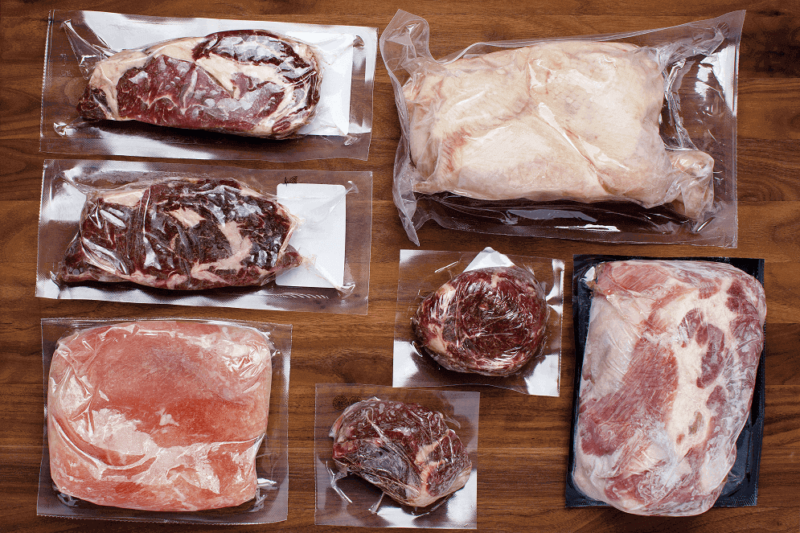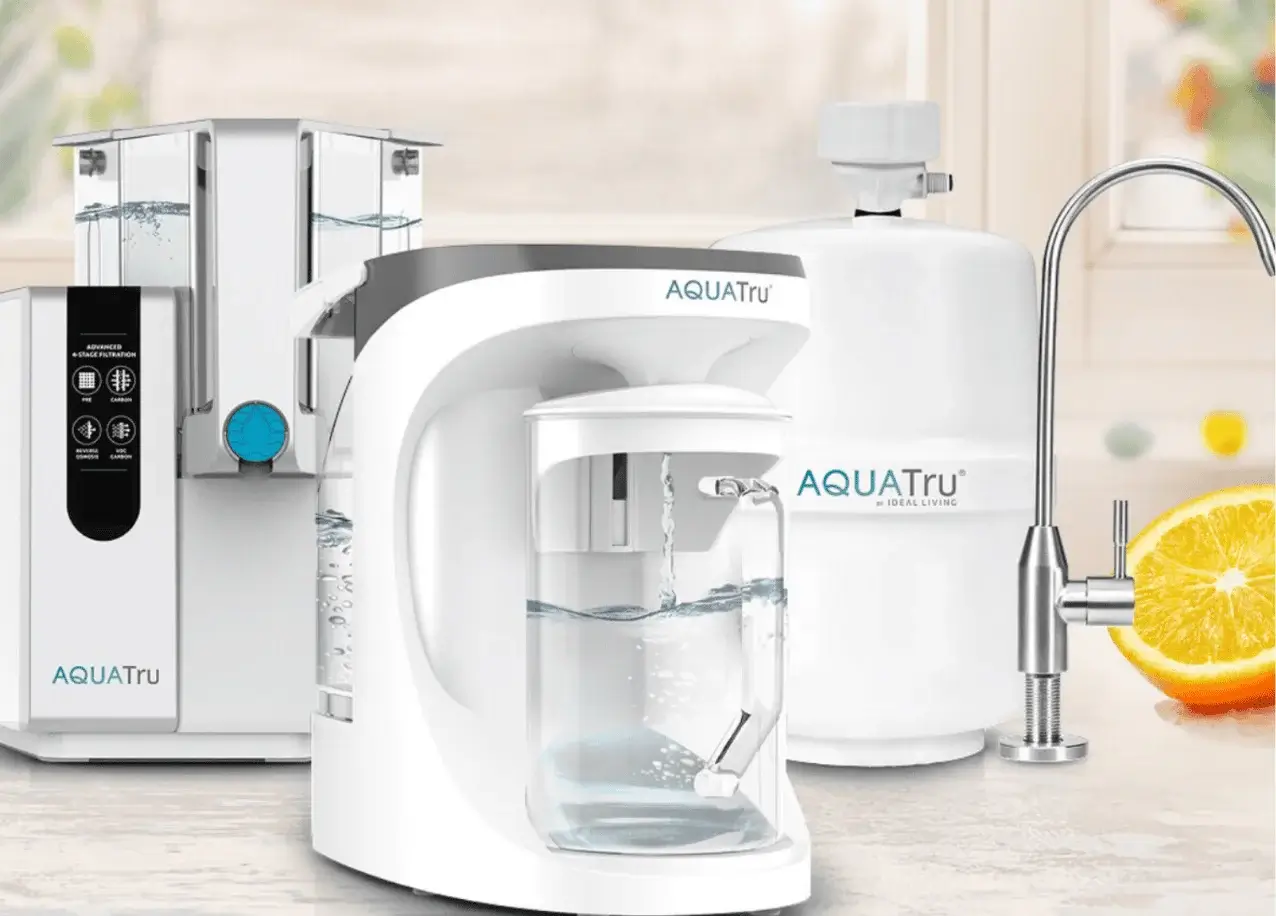Things can get confusing fast when you’re shopping for the best meat subscription box so you’ll want to see our Wild Pastures Review. “Grass Fed,” Pasture-Raised,” “Organic,” “Natural.” These terms are becoming more and more common to see on your grocery store shelves. So what exactly do they mean? And is it worth the higher price tag?
You might be surprised to hear that a lot of these terms mean, well, nothing. But there are rare cases where the flavor, texture, and nutrient profile are greatly affected by the terms on the label. To help you make better decisions when it comes to choosing a protein for your family, let’s break it down.
Table of Contents
- Flash Sale: $20 Off for life + Shipping + BONUS $15 (The Healthiest 100% Grass Fed and Finished, Pasture-Raised Meats Delivered From Regenerative Family Farms to Your Doorstep)
- The Problem with Conventionally Raised Meat
- Meat Labeling 101 Guide
- The Best Meat Subscription Box – A Wild Pastures Review
The Problem with Conventionally Raised Meat
Nearly every meat product on the market is raised in a concentrated animal feeding operation, or CAFO. You’ve probably seen the pictures. Where there are so many cows, pigs, or chickens piled into one small area you can barely differentiate one from the other. While the glaring issue here is animal welfare, there’s a lot more happening behind the scenes.
Antibiotics
Due to the close quarters of CAFOs, they’re shockingly unhygienic and disease can spread like wildfire. Instead of fixing the root cause of the issue, most conventional feeding operations treat their livestock with antibiotics so they can continue churning out as much disease-free meat as possible. In fact, it’s estimated 80% of antibiotics sold in the US are used on food-producing animals. (1)
As a result, we’re now seeing antibiotic resistance in humans, with “superbugs” developing resistance to their healing effects. In studies of the World Health Organization, antibiotic resistance is listed as one of the three biggest public health threats, (2) and the growth of treatment-resistant bacteria has been called the “silent pandemic.”
But this isn’t just a global concern. Studies show these antibiotics actually alter the bacterial populations in our gut. Since 80% of our immune system lives in the gut, these unnatural changes can lead to severe immune dysfunction, weight gain, and more. (3)
Research has shown when we restrict the use of antibiotics in animals, the prevalence of antibiotic-resistant bacteria goes down (for people and for animals)! (4) Meaning everyone should be shopping for antibiotic-free meat.
Hormones
Another additive of concern is synthetic hormones, used to produce more meat at a faster rate. One generational rancher explained how in his grandfather’s day, livestock were usually given 4-5 years to grow to full size. But today? Thanks in large part to the use of synthetic hormones, they can go from 80-1200 pounds in around 14 months! (5)
In 1981, the European Union banned the use of these synthetic hormones and refused to even import beef that contained them. Why? They claim six commonly used growth hormones have the potential to cause “endocrine, developmental, immunological, neurobiological, immunotoxic, genotoxic, and carcinogenic effects.”
In short – not something you want in your food.
Unfortunately for us, in the United States, hormones have been approved for use since the 1950s and are now believed to be used on approximately two-thirds of all cattle and about 90% of the cattle on feedlots. (6)
SPECIAL PRICE JUST FOR NATURAL LIVING FAMILY READERS!
Our Natural Living Family “Group Buy” will get you $20 Off for life + Shipping + BONUS $15 (The Healthiest 100% Grass Fed and Finished, Pasture-Raised Meats Delivered From Regenerative Family Farms to Your Doorstep) from Wild Pastures at the best price possible.
GMOs
According to the National Corn Grower’s Association, “collectively, beef, poultry, pork and dairy producers represent corn growers’ No. 1 customer.” (7) And the FDA recognizes corn is “the most commonly grown crop in the United States, and most of it is GMO.” (8)
While there are wavering opinions on how big of a concern GMOs really are, let’s let the science speak for itself. A study published in the Journal of Organic Systems found that pigs fed GMO corn and soy were over 2 times more likely to get severe stomach inflammation. Plus, they had (on average) a 25% larger uterus, which may indicate disease. (9)
A 2022 systematic review on GMO consumption in animals and humans concluded “Serious adverse events of GM consumption include mortality, tumor or cancer, significant low fertility, decreased learning and reaction abilities, and some organ abnormalities.” (10)
While they acknowledged more human clinical trials were necessary to determine long-term effects, it’s not a risk anyone should be willing to take. To take extra steps to avoid these potentially harmful additives, it makes sense to buy higher-quality meat products. But that is a lot easier said than done.
Meat Labeling 101 Guide
The truth is – 99% of meat products in grocery stores come from CAFOs.
Even though you likely see a lot more than 1% of products labeled, “natural”, “grass-fed” “pasture-raised” “organic” “free range” and “cage-free,” many times these labels don’t mean what you think they do.
First up – Natural.
Many consumers look for the word “natural” on the products they buy. Unfortunately, the only requirement for meat to be labeled “natural” is that it is minimally processed (i.e. without artificial flavors added) and processed in a way that doesn’t fundamentally alter the product.
Organic
Many people today believe that organic products are the best-case scenario, but when it comes to animal products, this isn’t always true.
Organic cows can be fed organic soy and corn that can be treated with approved pesticides according to USDA standards. They are also not allowed to live in feedlots for extended periods of time, but current USDA regulations only require cows to be on pasture for 120 days a year.
What this means is that organic cows can still live in unsanitary feedlots for a significant amount of time. There are no animal care standards such as weaning, space requirements, transport, and slaughter (which vary widely from producer to producer). According to the Animal Welfare Institute, the USDA has allowed screened porches to qualify as outdoor access for birds. So as with many of the labels we’ve heard about, organic is a step in the right direction, but there are still shortcomings.
Cage Free
If you see “cage-free” on a package of chicken breast – know you’re being duped! Chickens raised for meat aren’t technically kept in cages (only laying hens are!) – they’re kept in coops. And even chickens raised in cage-free conditions can still be crammed into a warehouse with tens of thousands of other chickens in super tight quarters with no access to the outdoors.
SPECIAL PRICE JUST FOR NATURAL LIVING FAMILY READERS!
Free Range
To use this label, the USDA requires animals to simply have access to the outdoors. In practice, most meat manufacturing conglomerates just add a small door to their factory farms and call it “pasture access.” Unfortunately, the door is typically very small and the animals often don’t even know it exists due to the size of the confinement warehouses. Oftentimes the door simply leads to an outdoor concrete or dirt lot.
There is also no government definition of “pasture” and no in-farm visits are required – so their “pasture access” is never confirmed.
Pasture-Raised
Similar to “free range,” with no government definition of “pasture,” companies can easily label their products “pasture-raised” when their animals are on pasture, tightly confined by wire and with low roofs and unsanitary conditions similar to that of CAFOs.
Grass Fed
Since nearly all livestock are fed grass at some point in their life before being fed copious amounts of GMO grains, most meat manufacturers can get away with using the claim to increase their prices!
Plus, many “grass-fed” labeled products are finished on grains, in an effort to help them gain weight more efficiently. This grain finishing increases the amount of omega-6 fatty acids in the final product, giving the beef a more inflammatory omega fatty acid ratio of 6:3.
The Best Meat Subscription Box – A Wild Pastures Review
If you’ve been purchasing meat with the above labels from your local grocery store, there are much better options.
Here are some quick criteria of what to look for in each type of animal product to make sure you are getting the cleanest, nutrient-dense protein.
Beef
- Grass-fed & finished (never fed grain)
- Never confined
- Never given antibiotics
- Never given growth hormones
- Rotationally grazed
- Raised in America
- Raised with humane practices
Chicken
- Pasture Raised (actually living outside in regenerative settings)
- Non-GMO grain + insects + forage
- Never given antibiotics
- Humanely handled
- Raised in America
One place that meets all the above criteria for every animal product is one of our favorite companies – Wild Pastures.
They’re bridging the gap between small-scale farmers in America practicing regenerative agriculture, and people like you looking for the highest quality meat products without spending a fortune.
There are so many reasons we love Wild Pastures Meat delivery:
- The truth is on the label. When a product says grass fed & finished without antibiotics, hormones, or GMOs, that’s exactly what you get. No fancy marketing tricks or labeling loopholes.
- It goes beyond sustainable, it’s regenerative. By working exclusively with farmers who practice regenerative agriculture, not only is the product better for you, it’s better for the planet! Using rotational grazing methods, these farms improve the health of our soil and help sequester carbon out of the atmosphere for future generations.
- From American family farmers to your doorstep. You can skip the grocery store markups and long lines, and get the highest quality meat without leaving the comfort of your own home.
- It’s completely customizable! You can swap out different cuts, change your delivery date to the week that works best for you, or skip your order if you’re going to be out of town, or your freezer is still stocked from your last shipment.
- From a family-run company with a tight-knit community feel. The Wild Pastures customer service team is fast to respond to any questions, concerns, or complaints, and never hesitates to go above and beyond to make sure you’re happy with the product. Can’t always say the same about the grocery store customer service desk.
- The lowest prices without cutting corners – We know “high quality” often comes with a hefty price tag. But with Wild Pastures, by ordering in bulk and spreading the cuts across their customer base of over 16,000 members, you get the best meat at wholesale prices. And if that wasn’t enough…
NLF “Group Buy” (FREE shipping + Savings)
As part of our partnership with Wild Pastures, you get access to the best price on grass-fed, pasture-raised, non-GMO meat with customizable orders for you and your family.
Studies have shown that pasture-raised meat contains more vitamins, minerals and antioxidants than conventionally raised. Join our group buy for the best price possible on the healthiest, 100% grass-fed & finished, pasture-raised meats from regenerative family farms to YOUR doorstep!
–> Get $20 Off for life + Shipping + BONUS $15 from Wild Pastures!
- https://www.marketwatch.com/story/80-of-antibiotics-sold-in-america-arent-used-to-treat-people-2015-04-29
- https://www.sciencedirect.com/science/article/pii/S2666517421000080
- https://www.ncbi.nlm.nih.gov/pmc/articles/PMC3466501/
- https://www..ncbinlm.nih.gov/books/NBK487956/
- http://www.eebweb.arizona.edu/Courses/Ecol406R_506R/Power%20Steer%20-%20New%20York%20Times.pdf
- https://sgp.fas.org/crs/row/R40449.pdf
- https://www.ncga.com/key-issues/other-topics/animal-agriculture
- https://www.fda.gov/food/agricultural-biotechnology/gmo-crops-animal-food-and-beyond
- https://www.organic-systems.org/journal/81/8106.pdf
- https://enveurope.springeropen.com/articles/10.1186/s12302-021-00578-9









